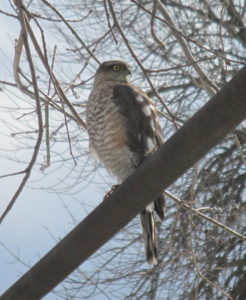 A fortnight ago I rescued an injured hawk in the Spanish countryside and gave it shelter for the night (see Hawk). I have since reached the point in the sequel to ‘Reconquista‘ where most of the characters are up in the mountains with hawks, falcons and eagles. But, one matter aside ( checking up on Hawk ), I believed that, henceforward, I would be dealing with raptors only of the fictional kind.
A fortnight ago I rescued an injured hawk in the Spanish countryside and gave it shelter for the night (see Hawk). I have since reached the point in the sequel to ‘Reconquista‘ where most of the characters are up in the mountains with hawks, falcons and eagles. But, one matter aside ( checking up on Hawk ), I believed that, henceforward, I would be dealing with raptors only of the fictional kind.
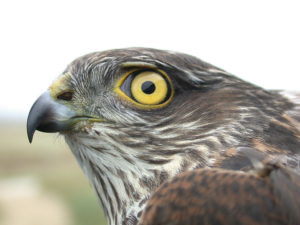 Imagine my surprise when my attention was drawn to a new and strange bird in my London garden. A sparrowhawk. I have lived in the same house for almost twenty five years and, while our garden has attracted all kinds of wildlife during that time, including wild birds, I have never seen a sparrowhawk there. We spotted a kestrel one year, but it was just passing through and, at first, we assumed that the sparrowhawk would do the same.
Imagine my surprise when my attention was drawn to a new and strange bird in my London garden. A sparrowhawk. I have lived in the same house for almost twenty five years and, while our garden has attracted all kinds of wildlife during that time, including wild birds, I have never seen a sparrowhawk there. We spotted a kestrel one year, but it was just passing through and, at first, we assumed that the sparrowhawk would do the same.
We have a large colony of small birds, particularly house sparrows, despite sparrow population numbers sharply declining in London. This is mainly because our garden edges are hedges. I learned, long ago when we moved in, how to layer a hedge to re-vitalise it, a necessary skill as our hedges were probably nearly a hundred years old. But now they thrive and so do the sparrows, tits and finches which live within them.
The sparrowhawk, genus Accipiter (as opposed to the American falcon which is also commonly called a sparrowhawk) feeds on these small woodland birds. So, beautiful though it is, we are hoping that this particular sparrowhawk will move on.
Returning to the other raptor, regular readers will know that Hawk was taken to a recuperation centre. Since then we have contacted the centre to enquire after his progress and, I was pleased to learn, Hawk is doing well. His only injury is a broken wing bone, which is expected, with 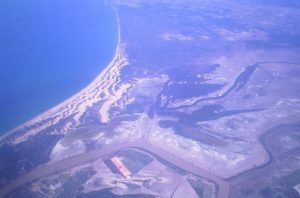 help, to mend. The veterinarians are very skilled in this sort of treatment, as they see a lot of injured birds and such centres proliferate in this particular part of Spain. Only a few miles to the north is the Donana, one of the largest nature reserves in Europe ( see aerial photo ) and that, and the narrow crossing of the Mediterranean at the Straits of Gibraltar to the south, means that twice a year the skies here are full of migrating birds, flying south for winter or north to breed.
help, to mend. The veterinarians are very skilled in this sort of treatment, as they see a lot of injured birds and such centres proliferate in this particular part of Spain. Only a few miles to the north is the Donana, one of the largest nature reserves in Europe ( see aerial photo ) and that, and the narrow crossing of the Mediterranean at the Straits of Gibraltar to the south, means that twice a year the skies here are full of migrating birds, flying south for winter or north to breed.
The land, and marsh, between the Rios Tinto and Guadalquivir which forms a large part of the Donana was first preserved, as a royal hunting reserve, by our old friend King Alfonso X in 1262. Subsequently it belonged to the Guzman family, the Dukes of Medina Sidonia, who have featured here before ( see Contrasts ). It was Dona Ana, the wife of the 7th Duke, who built a country retreat there and gave it its name. The palace ( which is 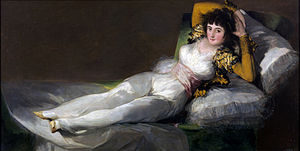 what the retreat became ) had many illustrious visitors, including Goya. It was here, it is claimed, that he painted his famous portraits ‘La Maja Vestida‘ and ‘La Maja Desnuda‘, both said to be of the Duchess of Alba, wife to the 13th Duke, with whom Goya supposedly had a love affair¹.
what the retreat became ) had many illustrious visitors, including Goya. It was here, it is claimed, that he painted his famous portraits ‘La Maja Vestida‘ and ‘La Maja Desnuda‘, both said to be of the Duchess of Alba, wife to the 13th Duke, with whom Goya supposedly had a love affair¹. 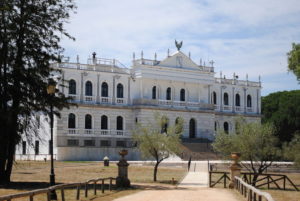 Both are currently in the Prado, Madrid.
Both are currently in the Prado, Madrid.
A new palace was built in the 1960s, the Palacio del Acebron (see left), which is now the Park’s Visitors Centre. The Donana attracts huge numbers of visitors every year, so it’s just as well that it’s large. Access is limited – there is only one asphalt road of any size into the park, although there is a holiday complex on the coast as well as an hotel in the park itself. Many tourists choose to take a tour or a ship from Sanlucar de Barrameda.
¹Though there are other theories about who the Maja is.
If you enjoyed reading this article you might also enjoy Visit to the Palacio del Virrey de Laserna Cadiz in the rain Verano en Jerez


 RSS – Posts
RSS – Posts